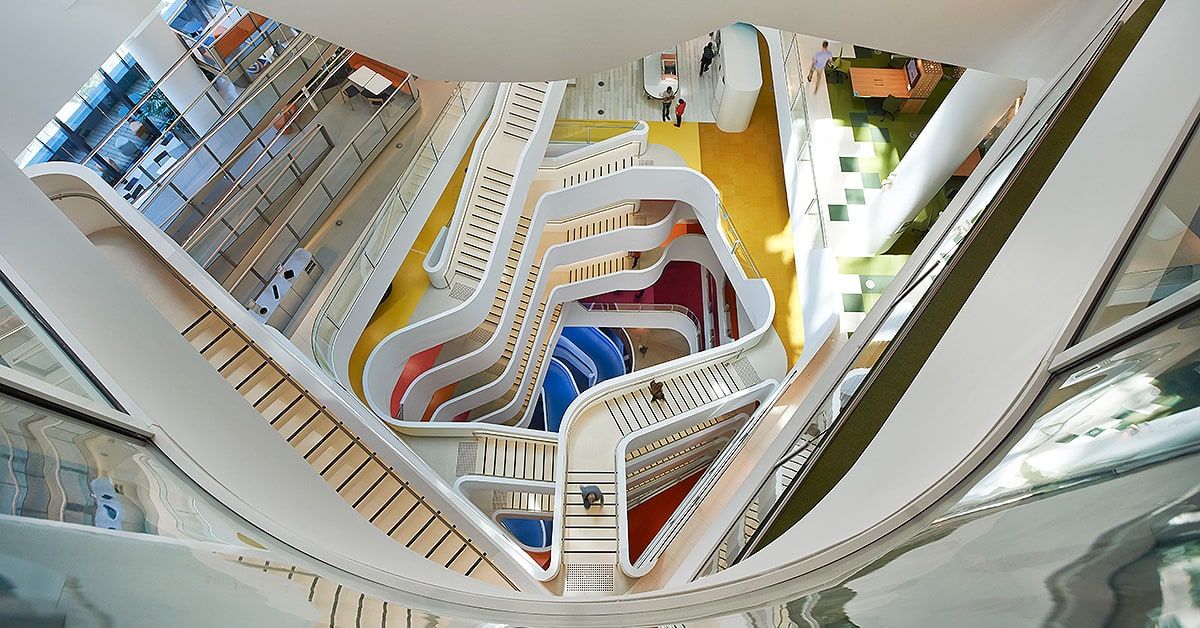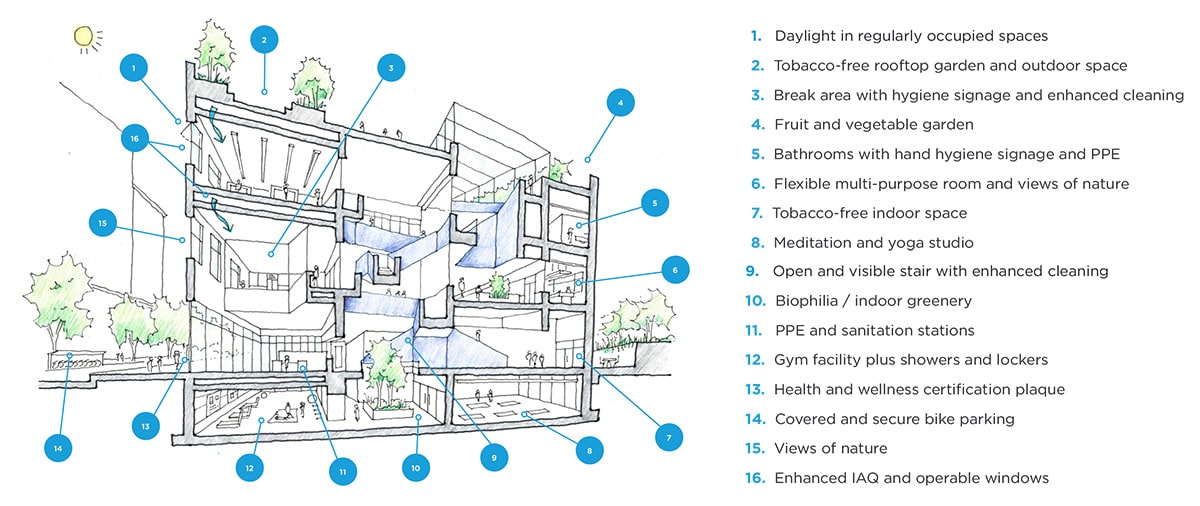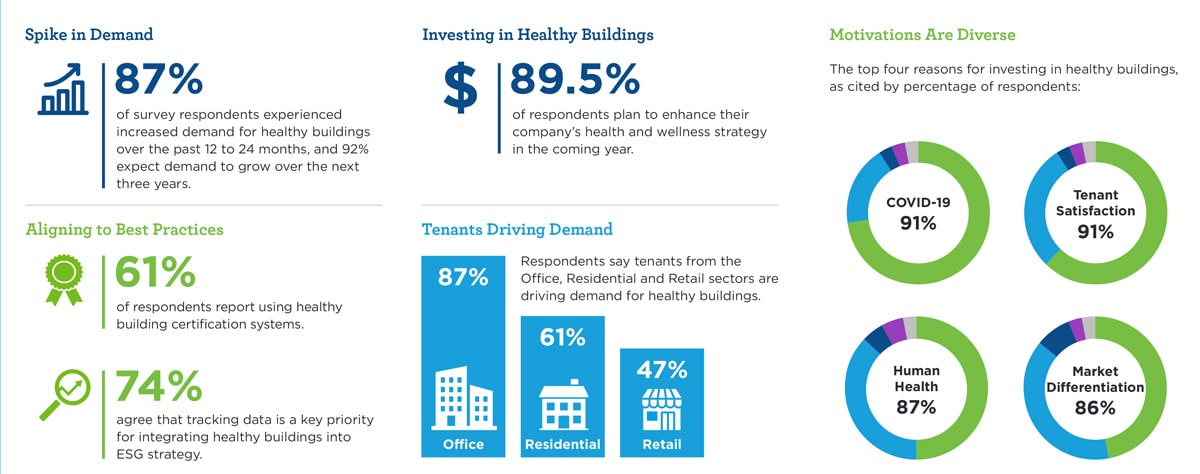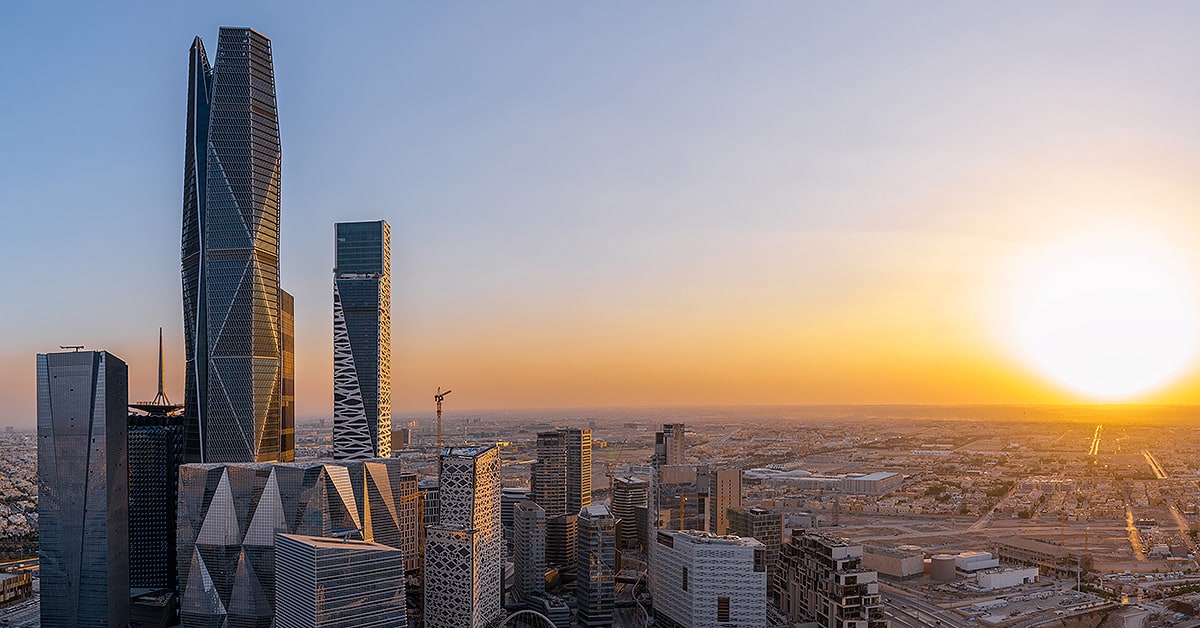 Atrium of Medibank Place, Melbourne, Australia. Design & Photo © Hassell Studio
Atrium of Medibank Place, Melbourne, Australia. Design & Photo © Hassell Studio .
A recent report seeks to quantify the extent to which global real estate investors are focusing on health and wellness as an investment strategy across office, residential, retail, and other building types. Reflecting the views of transnational industry groups with USD $5.75 trillion total assets under management, the report serves as an inspiration to developers, architects, engineers and interior designers who are creating the next generation of healthy buildings.
Real estate investors increasingly demand healthy buildings, according to the largest health and wellness study of global real estate investment managers ever conducted. Coordinated by global real estate group BentallGreenOak (BGO), the United Nations Environment Programme Finance Initiative (UNEP FI) and the non-profit Center for Active Design (CfAD), the study, called “A New Investor Consensus: The Rising Demand for Healthy Buildings,” shows that the global real estate industry is responding to demand for buildings that support measurable health indicators. The survey participants are based mostly in North America and Europe, but they also manage real estate assets in Asia and the Middle East. The report certainly appears relevant to Middle Eastern markets, including in KSA with its booming commercial and hospitality sectors. Architects and designers will have an important role to play in adapting to the growing market for healthy buildings.
What is a “Healthy Building?”
A healthy building helps keep its occupants healthy. According to the “Healthy Buildings” report, developers and designers can optimize buildings for occupant health and safety through a mix of siting, design and operational strategies that measurably improve physical, social and mental health indicators. Some of these are familiar methods, and some rely on emerging technologies.
It will come as no surprise that access to daylight, break areas, and fitness and meditation/prayer rooms are considered “healthy” features. In light of the Covid-19 pandemic, there is also an increased emphasis on hygiene and enhanced cleaning. Engineering upgrades are needed to increase fresh air circulation via high-performance ventilation systems and to support indoor and outdoor plantings, preferably using recycled water. Active design principles also call for visible and naturally lit stairs as a healthy alternative to taking the elevator.
Some developers are moving to have their properties certified as healthy buildings by third-party certification systems. Among the most widely adopted certification system is the Center for Active Design’s “Fitwel” system of evidence-based strategies that promote positive health outcomes for occupants and communities.

What is a healthy building? Illustration by Alissa Johnson, Center for Active Design.
The business case for healthy buildings
The report’s authors state that the business case for healthy buildings is growing in markets worldwide. Global capital flows and rental prices in recent years indicate rising demand for certified healthy buildings. Specifically, certified healthy buildings garnered rental premiums of 4.4 to 7.0 percent over their standard counterparts. Companies who occupy such buildings, the argument goes, benefit from improved employee satisfaction and higher productivity, as well as lower absenteeism and lower turnover rates.
Indeed, the business rationale for healthy buildings is associated with social and environmental benefits. In the report’s opening preface, the head of the UNEP FI, Eric Usher, writes that healthy buildings have economic as well as social advantages: “Decades of research have concluded that improving occupant health and contributing to community well-being makes sound economic sense. Healthier workplaces improve employee productivity and retention, and active buildings and communities deliver societal gains that far exceed their costs.”

Report Highlights. From “A New Investor Consensus: The Rising Demand for Healthy Buildings,” 2021.
Architecture for health and wellness
The emerging data on healthy buildings is significant not only for real estate investors and developers, but also for the architects, engineers, interior designers, and landscape architects who are tasked with creating these spaces.
Omrania, as an integrated design and engineering consultancy, incorporates the latest research on healthy buildings into our designs. We continue to work with our clients to optimize occupant health, safety, and satisfaction — which in many cases may also boost the developer’s financial return on investment. Our activity in this area can be seen in a variety of recent projects, including:
- Saudi Electrical Company headquarters campus. This solar-powered campus is equipped with a series of large, daylit atriums that allow employees to mingle, stretch their legs, and enjoy greenery; and a central services building with shared amenities. Interior finishes were selected to exclude or minimize off-gassing of VOCs.
- Granada Business Park, also known as GOSI Office Park. This mixed-use, large-scale development is centered on a landscaped courtyard garden, with walkable connections between buildings.
- PIF Tower. As the centerpiece of the King Abdullah Financial District in Riyadh, the skyscraper uses a high-performance envelope system to bring daylight into the work environment while minimizing solar heat gain. The net result benefits occupant health and productivity as well as the building’s energy performance.
- Waha Office Building. Home to Omrania and other companies, this three-story building provides occupants with a tranquil garden entrance approach and ample daylighting through louvers that provide shade and privacy.
In sum, as the global real estate industry awakens to the ways in which the built environment impacts human health, architects must stand ready to design healthy buildings. As the report notes, “The places where we live, work, study and socialize can and should play a central role in improving human health.”















